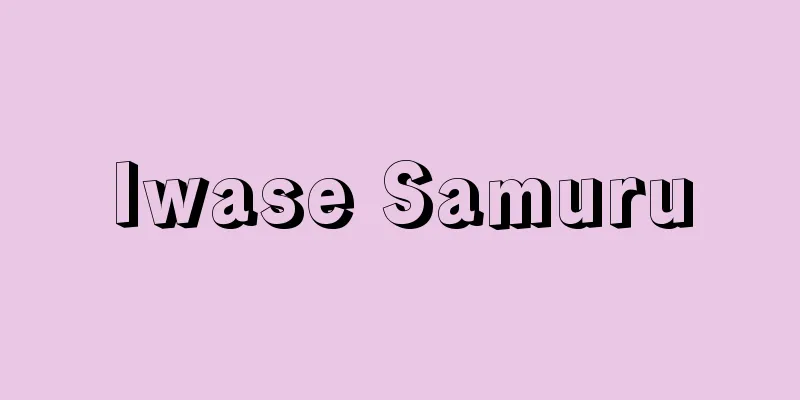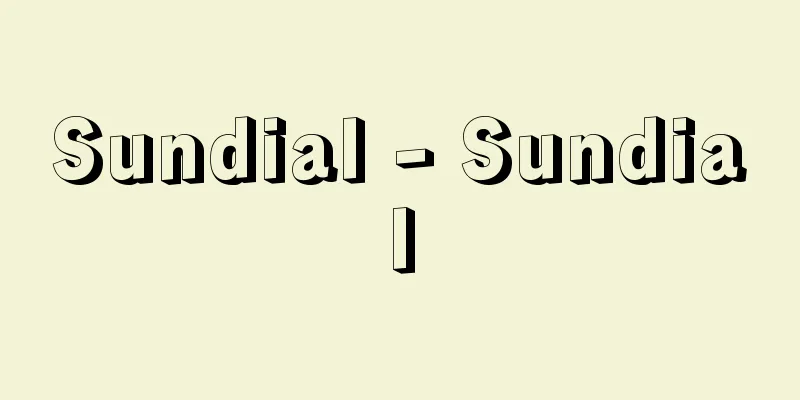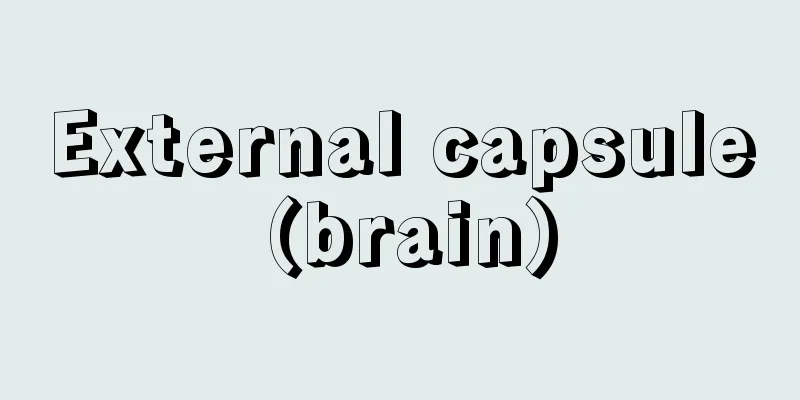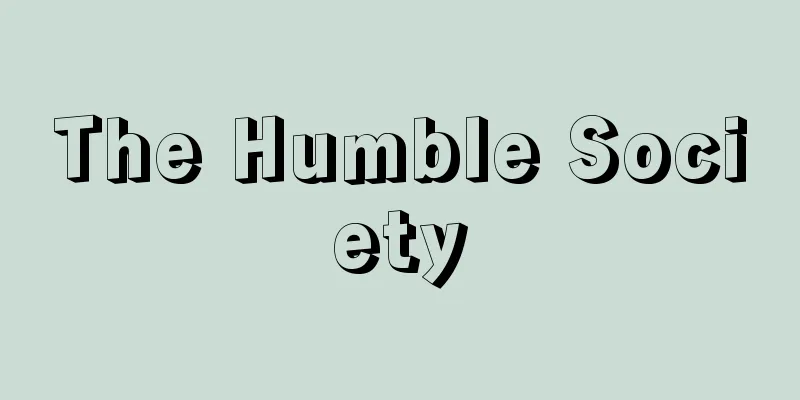Genetic code
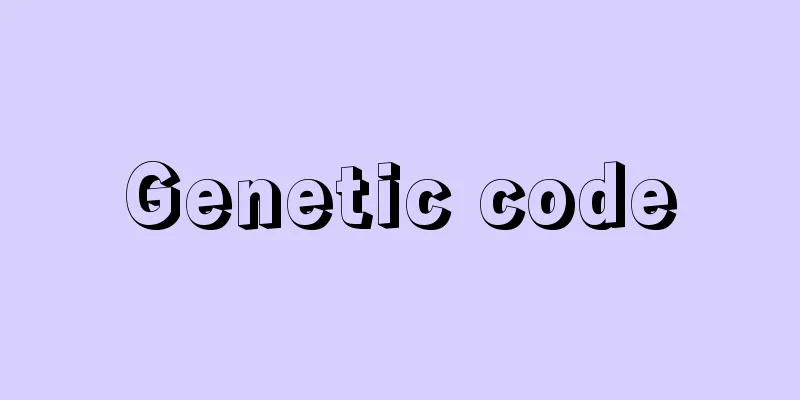
|
A code recorded as the sequence of nucleotides in nucleic acids that act as genes. It is translated into the amino acid sequence of proteins, determining genetic information. Genetic nucleic acids are deoxyribonucleic acid (DNA) or ribonucleic acid (RNA), and both are made up of four types of nucleotides. The base determines the characteristics of a nucleotide, and the bases that make up DNA are adenine (A), guanine (G), cytosine (C), and thymine (T), while RNA has A, G, C, and uracil (U) instead of T. The genetic code of gene DNA is made up of a combination of the four letters A, G, C, and T, which are transcribed into messenger RNA U, C, G, and A, respectively, which leave the nucleus and attach to small particles called ribosomes in the cytoplasm and are translated into protein structures. Proteins are made up of only 20 types of amino acids, and the type of protein is determined by the sequence and number of these. Therefore, the genetic code of messenger RNA determines the arrangement of the 20 types of amino acids. In 1961, Nirenberg et al. of the United States carried out the first experiment to decipher the AAA code, which is a sequence of adenine bases in DNA. They placed ribosomes, transfer RNA, and various enzymes necessary for protein synthesis in a test tube, and used radioactive amino acids to determine which amino acids make up protein chains. Since the AAA DNA code becomes UUU when transcribed into messenger RNA, an artificially synthesized RNA consisting of a series of U's was used as the code. Nirenberg et al.'s experimental results showed that UUU was the code for the amino acid phenylalanine. Subsequently, efforts to decipher such genetic codes were made both in test tube experiments using artificially synthesized RNA fragments and in vivo experiments using mutants, and by around 1966, almost the entire genetic code had been deciphered. The genetic code is usually represented by the base sequence at the RNA level. The RNA level code and the DNA level code are paired, and if we understand the RNA level code, we can understand the DNA level code by replacing A with T, U with A, G with C, and C with G. Now, the RNA level genetic code that has been deciphered from the results of various experiments has the following characteristics. (1) The genetic code consists of 64 three-letter codes. Each three-letter code unit is called a codon. (2) The code is read in the same format, that is, in units of three letters, called codons. Because the units are three letters, they are also called triplet codes. (3) The letters of the code are not repeated. (4) There are no punctuation marks, and the letters are read in groups of three. (5) In principle, a code has only one meaning. (6) AUG is the code for methionine, but exceptionally has another meaning and also serves as the first code in the genetic code. (7) The three codons UAA, UAG, and UGA do not specify any amino acid and are called nonsense codons; they act as stop codes for reading the genetic code. (8) There are multiple codes for specifying an amino acid, with the exception of the codes for methionine and tryptophan, and the most common is six. The genetic code is used commonly by all living organisms, from viruses to humans, and is read in the same way. However, it has recently been discovered that in the mitochondria of yeast and humans, the genetic code is read slightly differently from that in the nucleus. For example, UGA is a nonsense codon, but in mitochondria it becomes the codon for tryptophan. Also, AUA is the codon for isoleucine, but in mitochondria it becomes the codon for methionine. The genetic code in DNA is transcribed into messenger RNA, which is attached to ribosomes in the cytoplasm. Meanwhile, the tRNA in the cytoplasm carries specific amino acids and binds to the codons of the messenger RNA at a three-base moiety called the anticodon. For example, the anticodon of the tRNA molecule that carries tyrosine in E. coli is AUG, which can bind to the tyrosine codons UAC and UAU of the messenger RNA. In this way, tRNA with anticodons that can bind to the codons of the messenger RNA carries amino acids one after another, and a protein chain is synthesized. The genetic code can change through mutations. When one nucleotide in a gene's DNA is replaced with another, the codon at that position changes, and one amino acid may be changed. When one or two nucleotides are deleted or inserted, the entire reading frame of the code from that position onwards changes, and normal protein cannot be synthesized. This type of change is called a frameshift. When deletions and insertions occur consecutively, or when three nucleotides are deleted or inserted, the frameshift reverts to normal. If a protein can be purified and its amino acid sequence determined, the structure of the gene that makes that protein can be deduced from the code book. By linking nucleotides one after another according to the deduced gene structure using appropriate enzymes or catalysts, the gene can be artificially synthesized. Human insulin and interferon genes have been artificially synthesized in this way and are used in genetic engineering experiments. [Tatsuo Ishikawa] [Reference] |Source: Shogakukan Encyclopedia Nipponica About Encyclopedia Nipponica Information | Legend |
|
遺伝子として働く核酸にヌクレオチドの配列順序として記録されている暗号。タンパク質のアミノ酸配列に翻訳され、遺伝情報を決定する。遺伝子核酸はデオキシリボ核酸(DNA)かリボ核酸(RNA)であり、ともに4種のヌクレオチドからなる。ヌクレオチドの特性を決めるのは塩基の部分で、DNAをつくる塩基はアデニン(A)、グアニン(G)、シトシン(C)、チミン(T)であり、RNAはA、G、Cのほか、Tのかわりにウラシル(U)をもつ。遺伝子DNAの遺伝暗号はA、G、C、Tの4文字の組合せからできているが、これが伝令RNAのU、C、G、Aにそれぞれ転写され、核の外へ出て細胞質中のリボゾームとよばれる小粒に付着してタンパク質構造に翻訳される。タンパク質をつくっているアミノ酸は20種に限られており、その配列順序と数によりタンパク質種が決まっている。したがって、伝令RNAの遺伝暗号は20種のアミノ酸の並び方を決めている。 1961年にアメリカのニーレンバーグらは初めてDNAのアデニン塩基が並んだAAAという暗号を解読する実験を行った。彼らは試験管中にタンパク質合成に必要なリボゾーム、運搬RNA、各種の酵素を入れ、放射能をつけたアミノ酸を使い、どのアミノ酸がタンパク質鎖をつくるかがわかるようにした。AAAというDNAの暗号は伝令RNAに転写されるとUUUになるので、暗号としてはUばかりが連続してできた人工合成のRNAが用いられた。ニーレンバーグらの実験結果は、UUUはフェニルアラニンというアミノ酸の暗号であるというものであった。その後、このような遺伝暗号の解読は、人工合成したRNA断片を用いた試験管内実験、および突然変異体を用いた生体内実験の両面から進められ、1966年ごろまでにほとんどすべての遺伝暗号が解読された。 遺伝暗号はRNAレベルの塩基配列で示すのが普通である。RNAレベルの暗号とDNAレベルの暗号は対になるもので、RNAレベルの暗号がわかれば、AをTに、UをAに、GをCに、またCをGに置き換えDNAレベルの暗号を知ることができる。さて、各種の実験結果から解読されたRNAレベルの遺伝暗号は、次の特性をもっている。 (1)遺伝暗号は3文字からなり、64種ある。3文字の暗号の単位はコドンcodonとよばれる。 (2)暗号は一様に同じ形式、すなわち3文字ずつ、コドンを単位として読まれる。3文字を単位とすることからトリプレット暗号ともいわれる。 (3)暗号の文字は繰り返して読まれない。 (4)句読点にあたる暗号はなく、3文字ずつ連続して読まれる。 (5)一つの暗号は原則として一つの意味しかもたない。 (6)AUGはメチオニンの暗号であるが、例外的にもう一つの意味をもち、遺伝暗号の読み始めの暗号としても働く。 (7)UAA、UAG、UGAの三つの暗号はどのアミノ酸も指定せず、ナンセンスコドンとよばれ、遺伝暗号の読みの終止暗号として働く。 (8)一つのアミノ酸を指定する暗号は、メチオニンとトリプトファンの暗号が1種であるほかは複数あり、もっとも多いのは6種である。 遺伝暗号はウイルスからヒトに至るまですべての生物によって共通に使われ、同じように読まれている。ただし、最近、酵母やヒトなどのミトコンドリアでは、遺伝暗号の読み方が核の場合とすこし違っていることが明らかになった。たとえば、UGAはナンセンスコドンであるが、ミトコンドリアではトリプトファンのコドンになる。また、AUAはイソロイシンのコドンであるが、ミトコンドリアではメチオニンのコドンである。 遺伝子DNAの遺伝暗号は伝令RNAに転写され、細胞質中のリボゾームに付着する。一方、細胞質中の運搬RNAは特定のアミノ酸を運び、アンチコドンとよばれる三つの塩基部分で伝令RNAのコドンに結合する。たとえば、大腸菌のチロシンを運ぶ運搬RNA分子のアンチコドンはAUGであり、伝令RNAのチロシンのコドンであるUAC、およびUAUと結合できる。このようにして、伝令RNAのコドンに結合できるアンチコドンをもった運搬RNAが次々にアミノ酸を運び、タンパク質鎖が合成される。 遺伝暗号は突然変異によって変化する。遺伝子DNAのヌクレオチドの一つが他のものに置き換わると、その位置のコドンが変化し、アミノ酸1個が変化することがある。ヌクレオチドが一つまたは二つ欠失したり、挿入されたりすると、その位置から後の暗号の読み枠が全部変化し、正常なタンパク質が合成されない。このような変化はフレームシフトとよばれる。欠失と挿入が連続しておこったり、三つのヌクレオチドが欠失、または挿入されたときには、フレームシフトは正常に戻る。 タンパク質を精製して、そのアミノ酸配列を明らかにできれば、暗号表からそのタンパク質をつくる遺伝子の構造を推定できる。推定された遺伝子構造に従ってヌクレオチドを適当な酵素や触媒を用いて次々に連結すれば、その遺伝子を人工合成できる。ヒトのインスリンや、インターフェロンの遺伝子は、このようにして人工合成され、遺伝子工学実験に用いられている。 [石川辰夫] [参照項目] |出典 小学館 日本大百科全書(ニッポニカ)日本大百科全書(ニッポニカ)について 情報 | 凡例 |
>>: Sir Robert Anthony Eden, Earl of Avon
Recommend
Iwami Omori Silver Mine
…Due to the manual labor and poor ventilation of ...
Hessen-Darmstadt (English spelling) HessenDarmstadt
…A state (land) in central-western Germany. Histo...
Tsiolkovsky
Soviet physicist. At the age of nine, he became al...
Jail - Rōya
A place for detaining prisoners who have not yet b...
Phalke, DG (English spelling) PhalkeDG
...65 million people flock to 10,813 cinemas (6,6...
"The fence of love on the Katsura River, a thing that is in the road and the floating name"
…Katsura River Renri-Saku [Yasuda Bunkichi]. … *T...
Tokudo
To be able to go beyond the world of delusion and...
Expenses - public expenditures (English)
Although the term "expenses" is general...
Belly Art (belly art) - Haragei
A Kabuki acting term. It refers to expressing psyc...
Toyotaro Yuki
Banker and financier. Born in Akayu Town, Yamagat...
Hensho - Hensho
A monk and poet of the early Heian period. Also w...
Wei, Jin, and the Northern and Southern Dynasties
This refers to the period from the fall of the La...
Shindia
...It was a prosperous Hindu city since ancient t...
Sucking disc bat (English spelling)
A mammal of the Myzopodidae family (one genus, one...
Sphenisciformes
…A general term for birds in the Spheniscidae fam...
